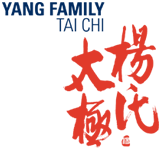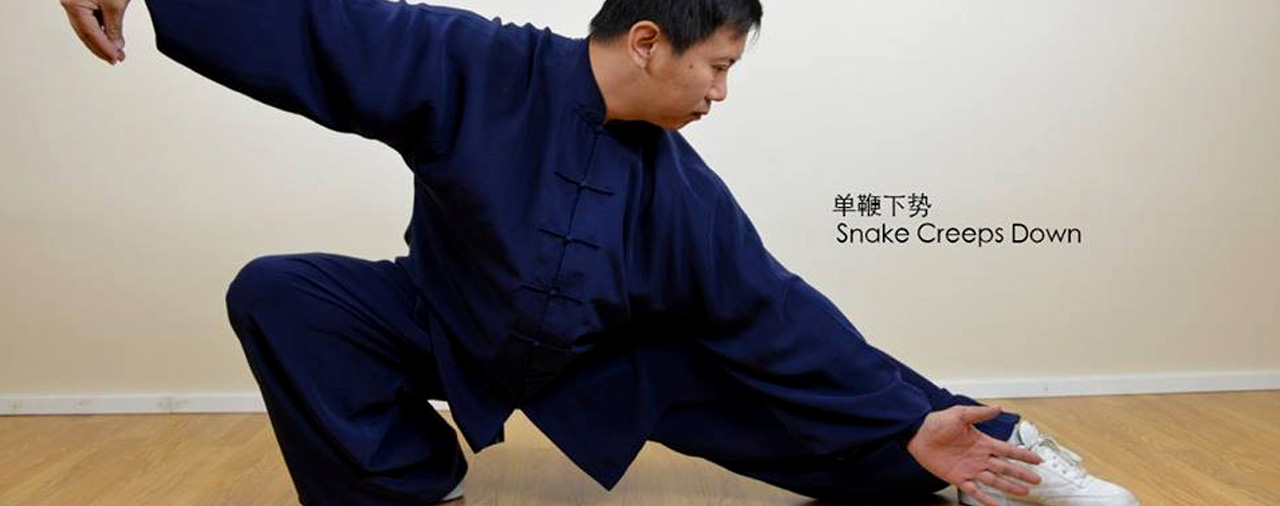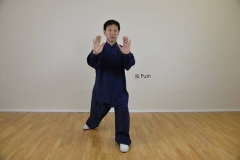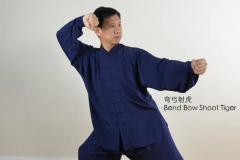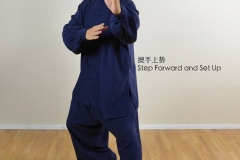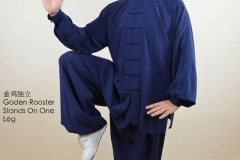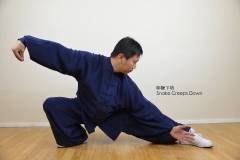In the Hand Form, Body Shape is closely linked to Footwork. The different stances have corresponding body shapes. Please note that no matter what footwork is used, the body shape must follow the Principles directing us to maintain the proper alignment resulting in smooth, easy movement and natural breathing. With three exceptions, when performing movements using the Bow Stance, the upper body inclines slightly forward, lining up the back with the angle of the back leg. Additionally, the upper body will either face forward or open to the side, depending on the requirements of the particular movement.
For example, in Push, the upper body inclines in the forward direction and also faces the forward direction. In Bend Bow Shoot Tiger the upper body inclines in the forward direction and is open toward the left.The three exceptions mentioned above are Left Ward Off, Single Whip and Fan Through the Back. In these three movements the upper body does not incline in the forward direction but remains upright, straight up and down.
When performing an Empty Stance, the body should lean slightly forward so that the Kua of the weighted leg is nearly over the Yong Chuan, Bubbling Well. Be sure to line up the back knee with the back toe direction, keeping the tail bone centered. With Empty Stances using the ball touch, the body faces forward. White Crane Spread It’s Wings and High Pat on Horse are examples. With Empty Stances using the heel touch, the body opens toward the side. Raise Hands and Step Forward and Fist Under the Elbow are examples.
When using the One Leg Standing Stance, Du Li, the standing leg is naturally straight with a slight bend, not locked. In this stance the body opens to the standing leg’s direction. The body maintains the alignment described in the Principles and is therefore natural, relaxed and expanded, with the head lifting up and the hip dropping down. Golden Rooster Stands on One Leg is an example.
In the Hand Form there is only one movement, Snake Creeps Down, that uses the Down Stance, Pu Bu. This stance requires the front leg to be naturally straight, the body to lean in the front foot direction, the kua to remain open and the back knee to be in alignment with the back toe direction. From the above information we see that the body always inclines or leans in the front foot direction yet the body may face either the forward direction or the open direction. They are not always the same.
